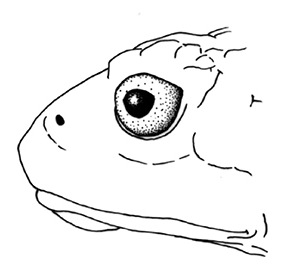Napo plump toad facts for kids
Quick facts for kids Napo plump toad |
|
|---|---|
 |
|
| Conservation status | |
| Scientific classification |
The Napo plump toad, also known as Osornophryne antisana, is a special kind of toad. It belongs to the Bufonidae family, which includes many different types of toads. This small toad is found only in Ecuador, meaning it is endemic to that country.
Contents
What is the Napo Plump Toad?
The Napo plump toad is a unique amphibian. It is known for its "plump" or rounded body shape. These toads are quite small and often have bumpy skin, which helps them blend into their surroundings. They are part of the large group of animals called amphibians, which can live both on land and in water.
Where Does This Toad Live?
This toad lives in specific places in Ecuador. Its natural habitats are usually:
- Moist montane forests: These are forests found on mountains where it rains a lot.
- High-altitude shrubland: Areas with many bushes and shrubs, located high up in the mountains.
- High-altitude grassland: Grassy areas also found at high elevations.
These areas are often cool and damp, which is perfect for amphibians like the Napo plump toad. They need a lot of moisture to keep their skin healthy.
Why is This Toad Important?
Every animal plays a role in its ecosystem. The Napo plump toad helps keep insect populations in check, as toads often eat insects. Studying these toads also helps scientists understand more about the health of mountain environments. When a species is in trouble, it can be a sign that its habitat is also facing problems.
What Threats Does the Napo Plump Toad Face?
Sadly, the Napo plump toad is currently listed as an endangered species. This means it is at a high risk of disappearing forever. The main reason for this is habitat loss.
How Does Habitat Loss Affect Toads?
Habitat loss happens when the places where animals live are destroyed or changed. For the Napo plump toad, this can mean:
- Deforestation: Forests are cut down for farming, logging, or building.
- Climate change: Changes in temperature and rainfall patterns can make their habitats too dry or too hot.
- Human development: Roads, towns, and other human activities can break up their natural areas.
When their homes are destroyed, these toads lose their food sources, places to hide, and areas to lay their eggs. This makes it very hard for them to survive and reproduce.
How Can We Help the Napo Plump Toad?
Protecting endangered species like the Napo plump toad is very important. Here are some ways people are trying to help:
- Protecting habitats: Creating national parks and reserves helps keep their natural homes safe from human activities.
- Studying the toads: Scientists learn more about where they live and what they need to survive. This helps create better conservation plans.
- Raising awareness: Teaching people about these unique animals and the threats they face encourages more support for conservation efforts.
By understanding and protecting the Napo plump toad, we can help ensure that this amazing amphibian continues to thrive in the mountains of Ecuador for many years to come.
See also
 In Spanish: Osornosapo de Antisana para niños
In Spanish: Osornosapo de Antisana para niños


